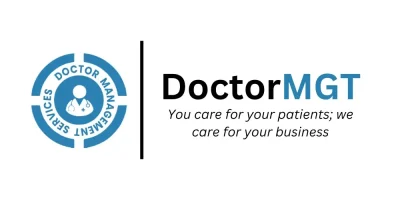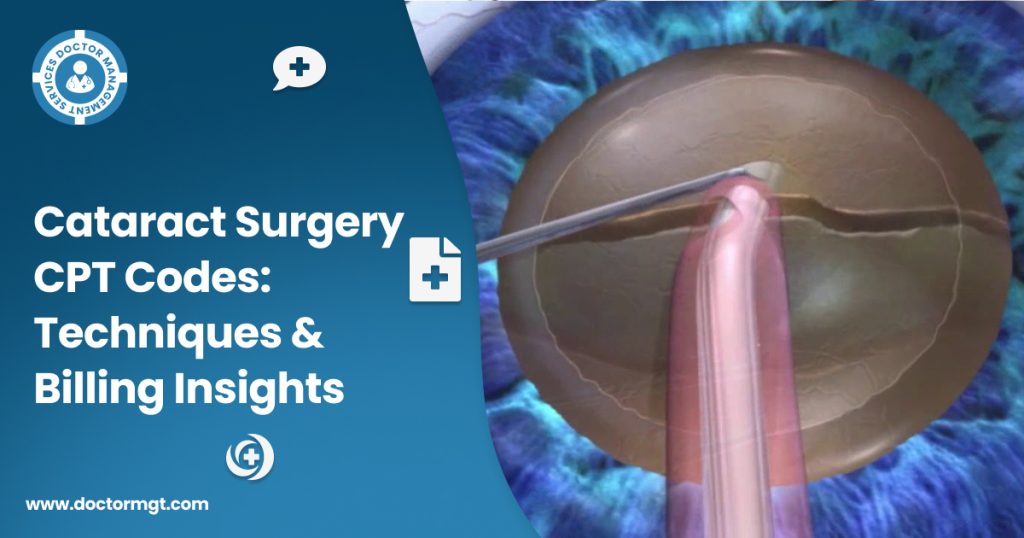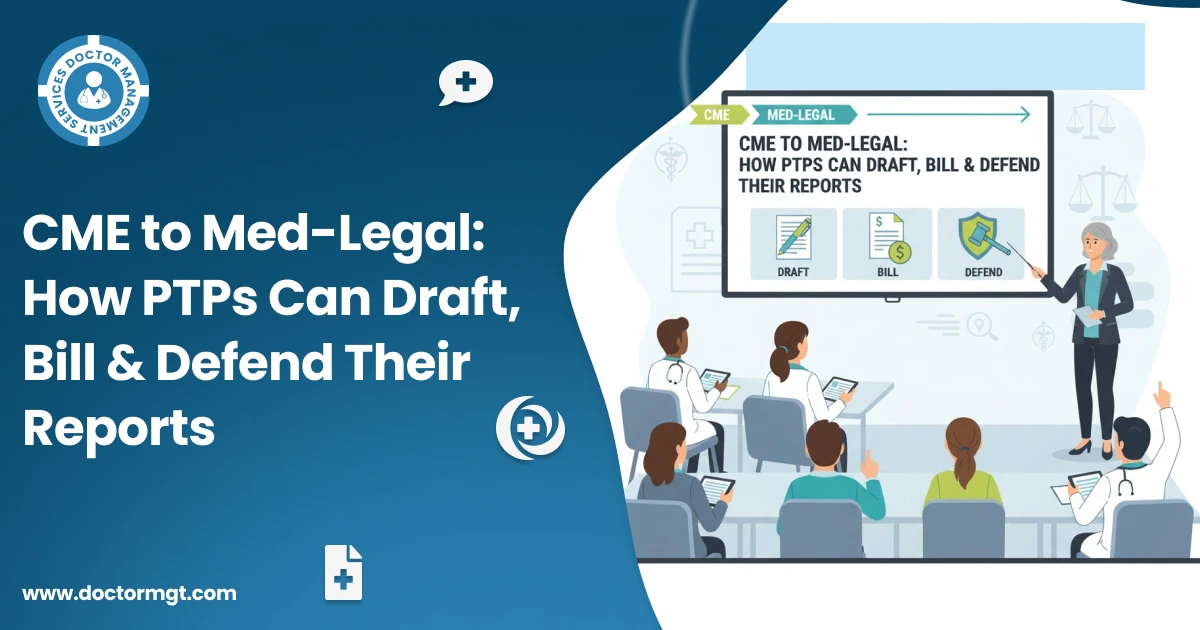Cataract surgery is a type of treatment that is mostly used in the U.S. Among various eye diseases, Cataract is pretty common, so is its surgery. The coding process is simple in most cases but the money part can be a real pain. Using the right CPT codes and proper documentation that is precise prevents denials and ensures reimbursement. This is not only relevant to the surgeon but also to everyone who is involved in the revenue cycle.
Before the surgery, the majority of the patients undergo an evaluation and a medical workup. Then, they use the surgical clearance ICD 10 code Z01.818 to indicate the exam that took place before surgery. This will justify testing and consultations when there’s no active illness but a need to evaluate the risk before anesthesia.
We’ll take a closer look at the kinds of cataract surgery, the application of CPT codes, and some examples of when billing can be a problem if proper care is not taken.
The Basics of Cataract Surgery Coding
Cataract surgery coding starts with the choice of technique. The two primary types are:
- Manual extracapsular cataract extraction (ECCE)
- Phacoemulsification with intraocular lens implant (phaco-IOL)
Most modern cataract surgeries are done using phacoemulsification. It’s less invasive and allows faster recovery.
The common CPT codes include:
- 66984 – Routine cataract surgery with insertion of intraocular lens (most used code)
- 66982 – Complex cataract surgery, used when there are special needs like small pupils, scarring, or advanced glaucoma
- 66983 – Intracapsular cataract extraction, rarely used today
- 66991 – Secondary IOL placement when the first lens wasn’t implanted
- 66989 – Manual cataract surgery with insertion of new technology IOLs (used less often)
It’s important to know when to use the “complex” code. CPT 66982 should not be used just because the surgery was longer or more difficult. The documentation must support the complexity, such as capsular support issues or the use of iris hooks.
Technique Matters: What Makes a Case “Complex”?
Some cases call for special coding. Complex surgeries may include:
- Use of iris expansion devices
- Viscoelastic protection due to corneal problems
- Pediatric cataracts
- Post-traumatic eyes
- Dense, mature cataracts that require dye
When reporting CPT 66982, include a detailed operative report that justifies the complexity. If you don’t, you risk denials or downcoding.
Also, avoid using modifiers just because they “seem right.” Modifier -22 for increased procedural services requires full documentation and often won’t get paid unless the carrier agrees the case was unusually demanding.
Choosing the Right Modifiers
Modifiers are often needed to reflect the surgical setting and situation. Common ones include:
- -RT or -LT for eye laterality
- -50 for bilateral procedures
- -79 for unrelated surgeries during post-op period
- -24 for unrelated E/M during global period
- -25 for significant, separately identifiable E/M service
Let’s say the patient returns during the global period with a different issue, such as eye pain due to dry eye. An office visit may be reported with modifier -24.
Be cautious with bilateral surgeries. While Medicare may reimburse both eyes if done on different days, commercial plans vary. Some pay less or bundle the second eye.
Global Period and Post-Op Care
Cataract surgery comes with a 90-day global period. That means routine follow-ups are included in the original payment. However, not all visits are “routine.” If the patient develops a new issue—like a posterior capsular opacity—you may bill separately. In such cases, CPT 66821 for YAG laser capsulotomy is used.
Just make sure the diagnosis supports medical necessity, and documentation clearly shows it’s not part of routine post-op care.
Coding for Premium IOLs and Refractive Upgrades
Standard cataract surgery typically covers monofocal lenses. If patients opt for multifocal or toric lenses, Medicare won’t pay for the upgrade. The base procedure is billed as usual, but the patient must pay out-of-pocket for the premium portion.
You can’t code the entire premium lens procedure under CPT. Instead, use an Advance Beneficiary Notice (ABN) and document the patient’s agreement to self-pay. This protects your practice and keeps billing compliant.
Pre-Op and Post-Op Comanagement
Many ophthalmologists comanage with optometrists. If so, payment is shared, usually split 80/20 between the surgeon and the optometrist. But it must be documented properly.
The optometrist should not bill for post-op care unless there’s a written transfer agreement and the payer recognizes comanagement. Some payers, especially Medicare, expect modifier -55 (post-op care only), or -54 (surgical care only) depending on who performs what.
Check your contracts to avoid trouble. Some commercial payers don’t allow comanagement unless the surgeon is unavailable due to geography or emergency.
Diagnostic Tests and Imaging
Additional services may be needed before surgery, such as:
- A-scan (CPT 76519) – to measure axial length for lens calculation
- Optical coherence tomography (CPT 92134) – for retina screening
- Corneal topography (CPT 92025) – for irregular astigmatism or premium IOL planning
These services must be medically necessary. Don’t blanket-bill them for every cataract patient. If you’re using them only to support premium IOL selection, be transparent and collect payment directly from the patient.
Also remember, pre-op testing should match the documentation. That’s where many billing errors begin. Using standardized protocols helps staff avoid inconsistent coding.
Payer-Specific Guidelines
Different payers have different rules. Medicare may cover certain services that commercial insurers don’t, and vice versa. Always review local coverage determinations (LCDs) and payer bulletins.
For example, some Medicare Advantage plans require prior authorization for cataract surgery. Missing that step could mean no payment at all.
Private payers may have additional documentation requests—especially when billing for complex cataracts or using modifier -22. A proactive approach by your billing team can prevent payment delays.
That’s why working with an urgent care billing company or ophthalmology-specific billing vendor can ease the load. These professionals stay on top of coding changes, payer edits, and modifier rules so you don’t have to.
Common Billing Pitfalls and How to Avoid Them
Some of the most frequent mistakes include:
- Using CPT 66984 for complex surgeries without support
- Billing for diagnostic tests not medically necessary
- Failing to apply the correct modifiers
- Overlapping global periods without appropriate modifier use
- Not updating diagnosis codes when findings change
To avoid these, build a checklist for surgical coding. Keep it updated with CPT changes, payer policies, and documentation guidelines. Train both your clinical and billing teams together. When everyone understands what’s needed, fewer claims get bounced back.
Cataract Surgery and Injury-Related Claims
Sometimes cataract surgery follows trauma. In such cases, regular rules don’t apply. You’ll need additional detail in the claim, including injury date and specifics. Coordination of benefits becomes crucial.
If the injury is tied to a motor vehicle accident or workplace injury, billing needs to go through liability insurance or workers’ comp before using standard payers. This is where working with personal injury billing services can be a big help. They specialize in dealing with accident-related medical claims and know how to navigate lien-based reimbursement models.
Whether it’s a slip-and-fall or a rear-end collision, these claims require extra care. Delays are common, and documentation must be watertight. A specialized billing partner can make sure you don’t miss revenue or fall out of compliance.
Final Thoughts
Cataract surgery seems quite usual to the doctor, but things related to the billing are still very far from being simple. For CPT coding, the method of surgery chosen, the patient’s condition, and the accurate documentation are crucial points. Modifiers are to be applied carefully, and aftercare comes with its own rules.
If you are aware of the entire process—starting from pre-op clearance until post-op comanagement—you will be in an excellent position for arranging your business more effectively. Moreover, when it comes to an issue that includes injuries or complex situations, having the appropriate support can actually be the determining factor. This is why practices are opting for a specific kind of support, like personal injury billing servicesthat can handle the difficulty but still bring in the earned revenue.





